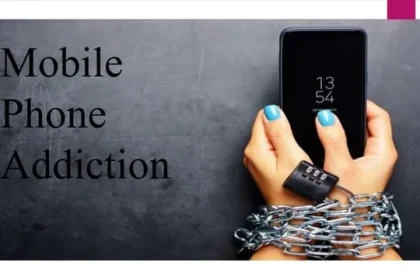Crisis as the Catalyst: Why Healthcare Leadership Must Begin Before Disaster Strikes
When a health crisis hits, everything moves fast ambulances rush, hospital corridors fill, and leadership decisions are made in seconds. But behind every visible emergency lies an invisible truth: the outcomes of a crisis are shaped long before it begins.
In Africa, where outbreaks, floods, and infrastructure breakdowns test healthcare systems every year, crisis has become the catalyst for innovation, reform, and resilience. Yet too often, leadership awakens only when disaster strikes reactive, not preventive. The challenge, experts say, is to move from improvisation to preparation, from urgency to anticipation.
A Continent Always in Response Mode
Kenya’s healthcare history is dotted with moments of reaction from the HIV epidemic to cholera outbreaks, from COVID-19 to drought-related malnutrition. Each event spurred emergency action, but rarely sustained systems. Clinics received temporary funding, supply chains were strengthened briefly, and health workers were deployed until the crisis faded and focus shifted elsewhere.
This cycle of “react–recover–forget” creates a dangerous dependency. It means lives depend on response speed rather than resilience strength. It also exposes a gap in leadership thinking a belief that crisis management is the same as crisis readiness.
The Missing Ingredient: Pre-Emptive Leadership
The real work of crisis leadership begins before the headlines. It lies in building systems capable of absorbing shocks not just reacting to them. Pre-emptive leadership demands foresight, discipline, and empathy: the ability to see patterns in silence, not just chaos.
“Preparedness is not a department,” says a Lifecare Hospitals emergency coordinator. “It’s a mindset.”
This mindset forms the backbone of Jayesh Saini’s healthcare strategy, which focuses on integrating prevention into every operational layer from hospital design to community outreach. His philosophy: a health system must breathe even when the world holds its breath.
Building Resilience Before the Alarm Sounds
Under Saini’s direction, the Lifecare hospital network has built infrastructure that can withstand crises both medical and logistical. Facilities are equipped with solar power backups, oxygen generation plants, and modular design that allows quick conversion of wards during emergencies.
But Saini’s strategy extends beyond infrastructure it’s about preparedness as culture. Regular simulation drills, cross-training of nurses for ICU and emergency functions, and data-driven inventory systems ensure no facility is caught off guard.
When floods disrupted parts of western Kenya in early 2024, Lifecare’s supply chain network pivoted in days, redirecting medical supplies through Dinlas Pharma hubs and deploying mobile units from unaffected counties. “That’s not crisis management,” notes one operations head. “That’s crisis anticipation.”
Why Reaction Is Never Enough
Africa’s healthcare landscape often confuses heroism with preparedness. We celebrate how fast doctors respond but rarely question why they had to. Leadership isn’t defined by how one manages chaos, but by how one reduces its frequency.
The healthcare crisis in Kenya is rarely about lack of expertise; it’s about weak systems that don’t learn between shocks. Policies exist, but they often lack operational translation. Hospitals have plans, but not rehearsals. Leaders hold meetings, but not simulations.
This is where proactive leadership becomes not just valuable, but vital. As Saini often states, “The true test of a healthcare system is not what it does on its busiest day, but what it prevents on its quietest.”
Proactive Leadership in Action
Saini’s proactive leadership model extends into community health through the Lifecare Foundation which runs preventive health camps, vaccination drives, and chronic disease education across counties. By training local health workers in early detection, Lifecare ensures that small problems are addressed before they become national emergencies.
During the COVID-19 pandemic, Lifecare’s preparedness allowed it to maintain continuity of care without major service disruptions. Lessons from that period have since been institutionalized from stockpiling essentials to developing telehealth frameworks that can activate during lockdowns or crises.
This proactive structure ensures that rural hospitals are not passive observers during national emergencies; they become nodes of resilience.
The Cost of Waiting for Crisis
In Kenya and across Africa, the absence of preventive leadership has tangible consequences. Delayed responses to drought-related malnutrition, sporadic disease surveillance, and underfunded emergency units all point to a system designed to chase problems rather than pre-empt them.
Every shilling spent in response could be halved if invested in readiness. Every life lost in a flood or outbreak is a reminder that waiting for crisis is the most expensive form of leadership.
Leaders who invest in early warning systems, decentralized health logistics, and capacity training may not make headlines but they save them from being written.
Leadership That Outruns the Emergency
Jayesh Saini’s leadership demonstrates what it means to outrun the emergency. His network doesn’t just plan for the next disaster; it learns from the last.
In 2023, Lifecare implemented a predictive analytics dashboard that tracks seasonal disease spikes and supply-chain vulnerabilities. These insights help facilities prepare months in advance whether for malaria surges during rains or respiratory infections during cold seasons.
It’s a model that transforms crisis from surprise to expectation and expectation into action.
Conclusion: The New Definition of Leadership
Crisis will always test Africa’s health systems. But the greatest crisis is complacency the belief that we can respond our way out of recurring emergencies.
Leadership for the future of African healthcare must therefore be pre-emptive, not performative. It must be built on data, discipline, and empathy qualities that define Jayesh Saini’s long-term vision for Kenya’s healthcare resilience.
As he often notes, “You don’t lead in a crisis you lead to prevent one.”
In a continent too accustomed to reacting, that philosophy may be its most powerful medicine yet.


